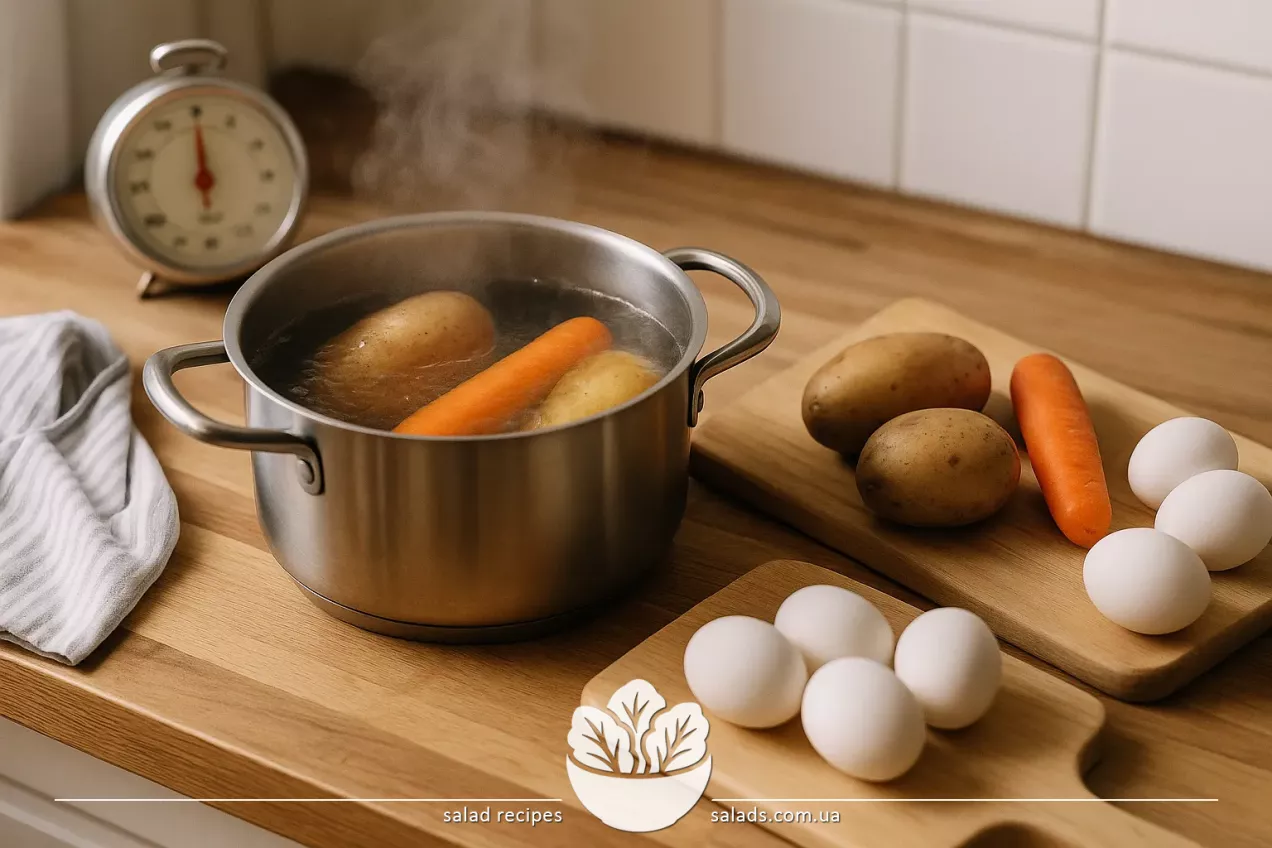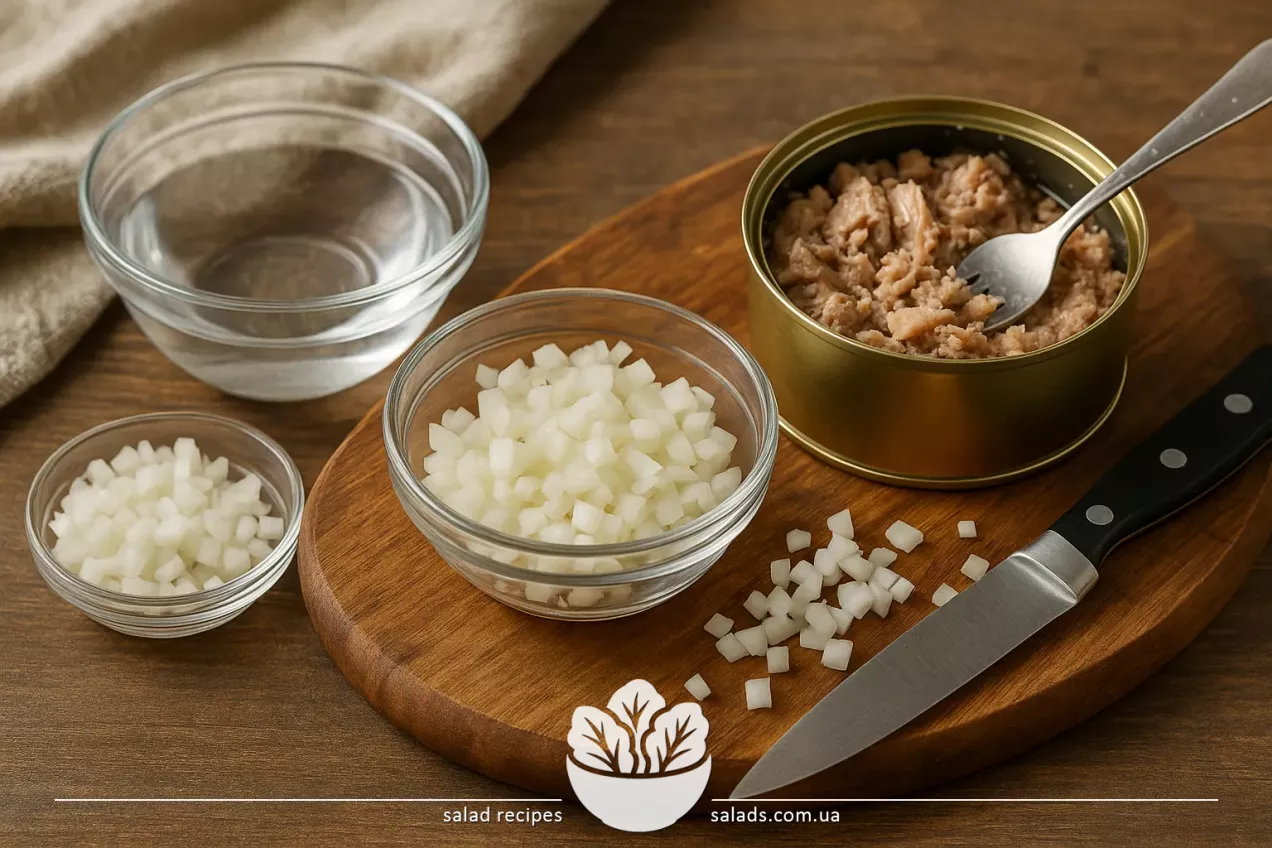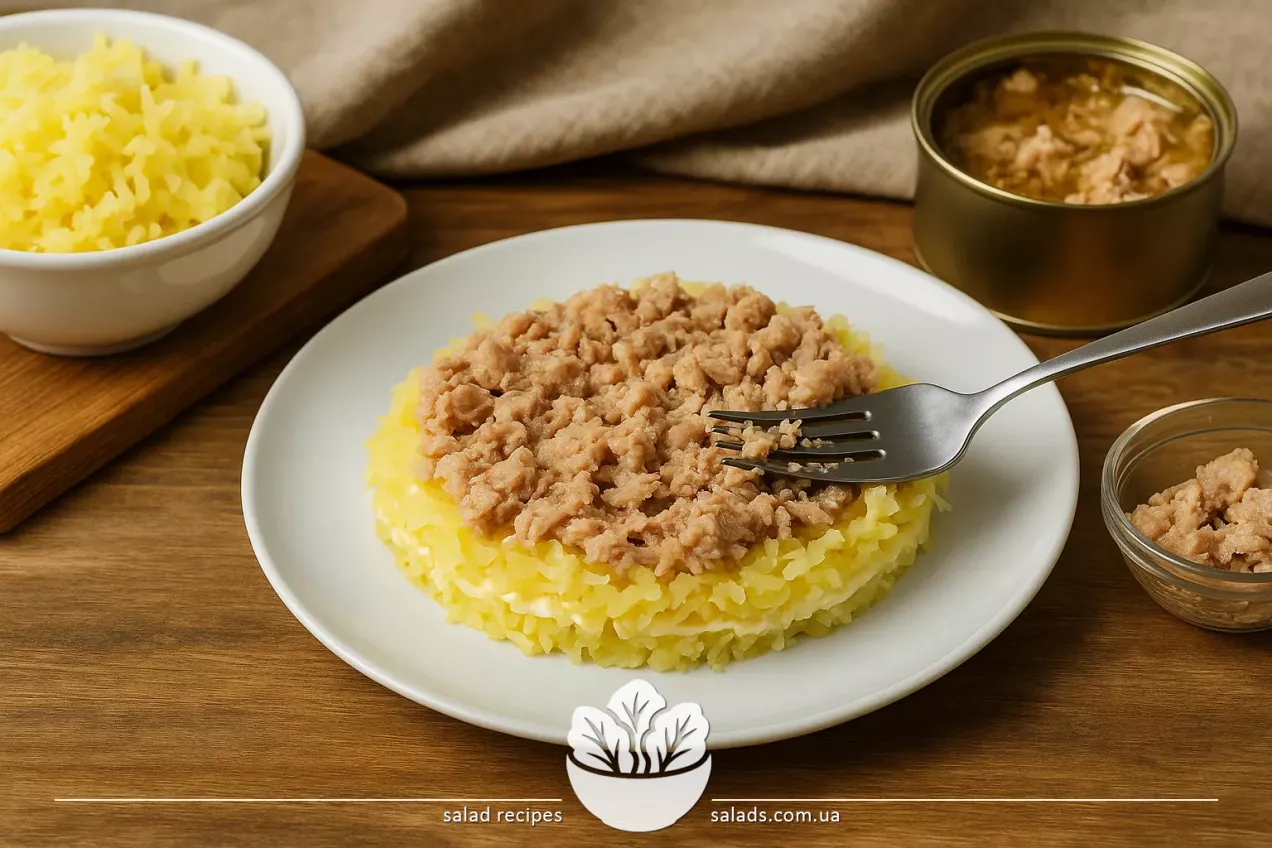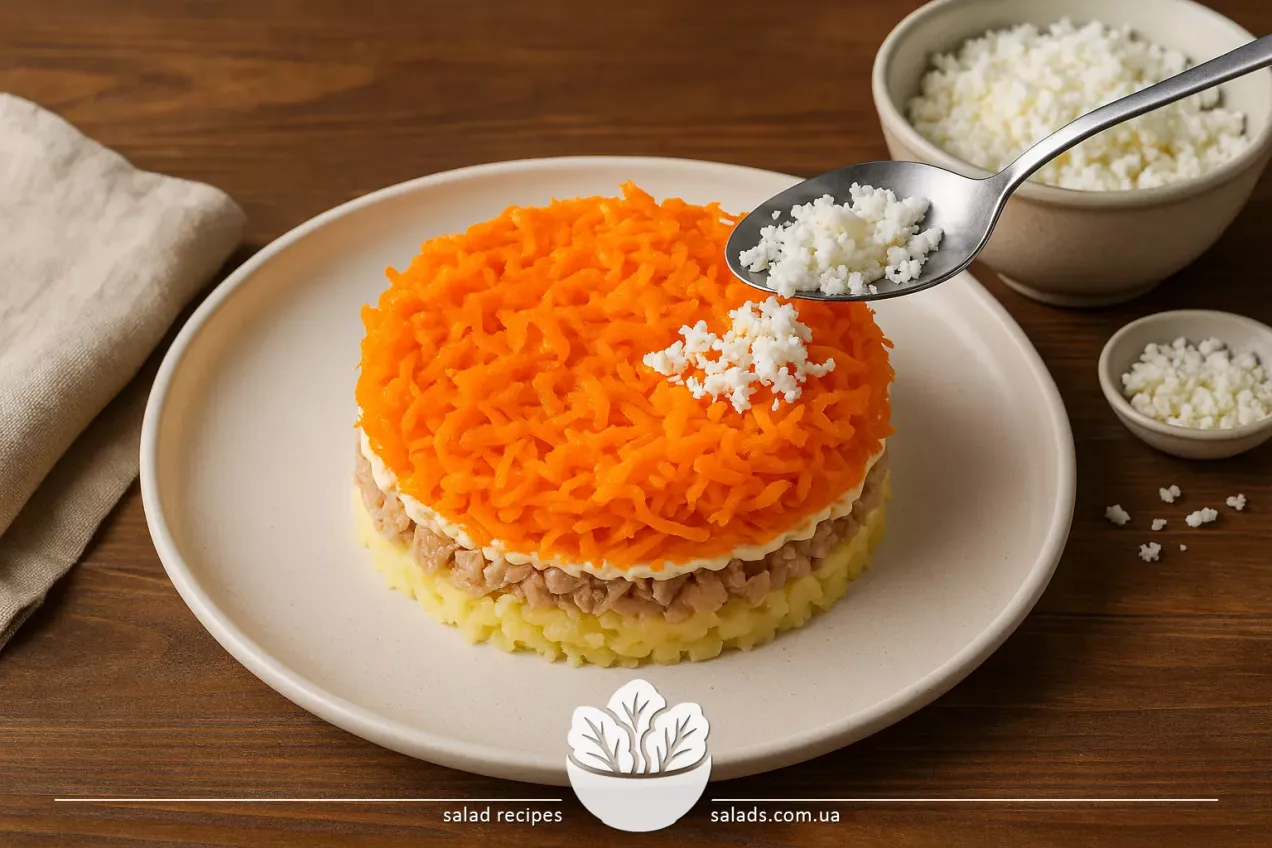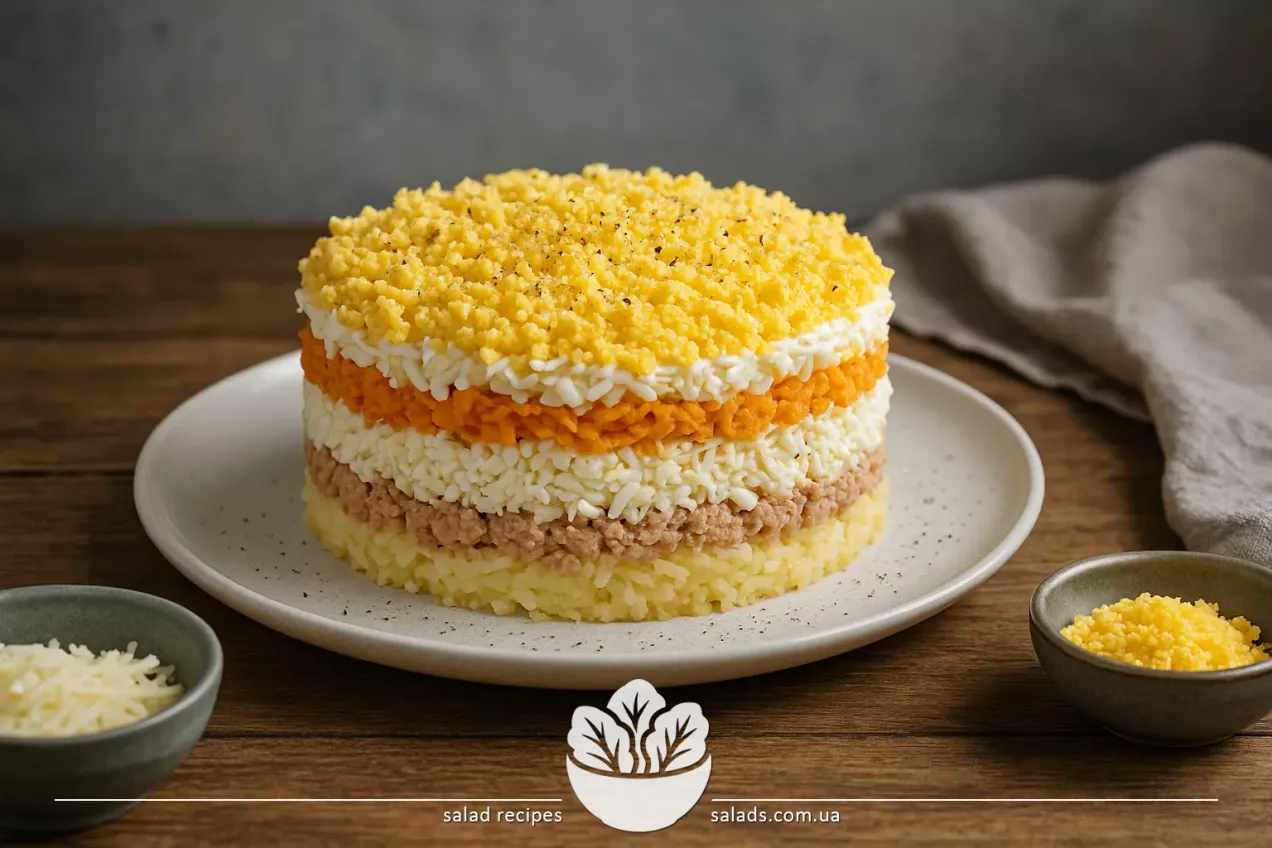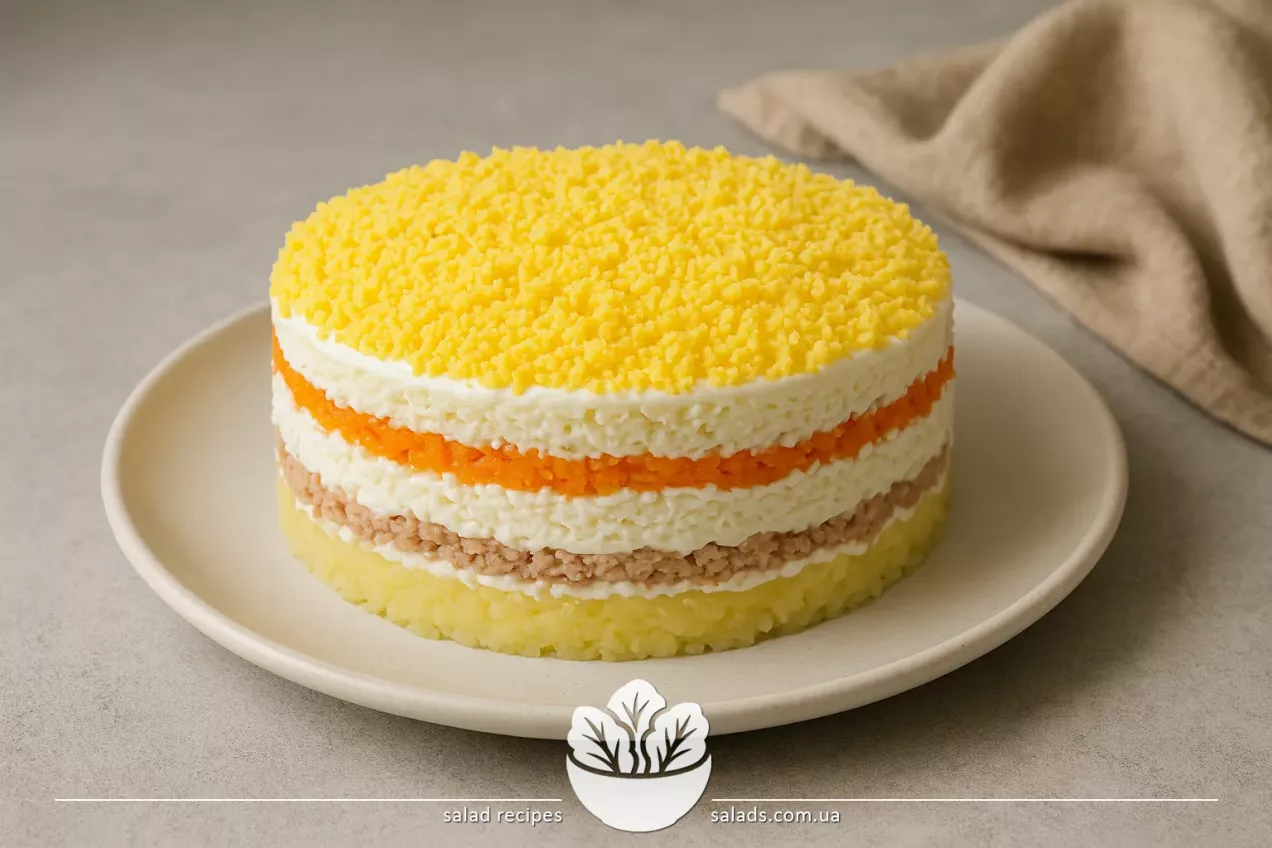
I’ve been making Mimosa Salad since I was a teenager – my mother passed the recipe to me, and my grandmother gave it to her. It’s one of those salads that never go out of style. It always brings to mind holidays, coziness, and a family atmosphere. I prepare it not only for New Year’s, but also for Easter and birthdays. Everyone at home loves it for its soft texture, the light saltiness of the fish, the tenderness of the eggs, and the special airiness created by the layered structure.
The base of the salad is canned fish – I usually use mackerel. It is combined with boiled potatoes, carrots, eggs, onions, a bit of hard cheese – and everything is laid out in layers, generously but not excessively, with each layer lightly spread with mayonnaise. It’s important to follow the correct order and not to rush so that each layer stays neat and holds its shape.
The most distinctive feature of this dish is the final layer of grated egg yolks. That’s what gives the salad its name, as it resembles blooming mimosa flowers. I always grate the yolks very finely – this makes the salad look especially delicate. The salad needs time to rest in the fridge – I always give it at least a few hours so the layers can blend well.
Ingredients for Mimosa Salad
Mimosa Salad Recipe
Prepare the Vegetables and Eggs
I place the potatoes and carrots in cold water and boil them until tender, without peeling – this helps preserve their flavor. I boil the eggs for 10 minutes after the water starts to boil. After cooking, I cool everything completely. Then I peel and grate the potatoes, carrots, whites, and yolks – all separately, so the layers can be distributed easily. The salad is assembled using cold ingredients – this helps it hold its shape better.
Prepare the Fish and Onions
I open the can of fish, drain the liquid, and mash the mackerel with a fork, removing small bones. I chop the onion very finely – it should only accentuate the fish flavor. To remove bitterness, I pour boiling water over it for a few minutes. Sometimes I use a light marinade – it adds a bit of tang.
Form the First Layer
I place the grated potatoes on a plate and press them gently with a spoon. I add a pinch of salt, pepper, and a thin layer of mayonnaise. It’s important not to over-salt – the fish and mayonnaise already provide enough flavor. This layer is the foundation, so it should be stable but not dense – the salad should remain tender.
Add the Fish, Onion, Vegetables and Whites
Next, I add the fish, spreading it evenly with a fork. Then comes the onion, carrot, a thin layer of mayonnaise, and then the egg whites. I layer everything gently, without pressing down. If done step by step, the salad turns out airy and juicy. Before the final layer, I add a bit more mayonnaise – for softness.
Final Layer – Cheese and Yolks
I grate the cheese on a medium grater – it should be soft but not sticky. I layer it over the egg whites, smooth it out slightly, and top the salad with the grated yolks. They create the “mimosa” effect and make the salad look festive. I often decorate the top with dill sprigs or slices of boiled egg.
Let the Salad Rest
Once assembled, I always refrigerate the salad for 2-4 hours, or ideally overnight. During this time, the layers absorb the mayonnaise well, the structure stabilizes, and the flavor becomes deeper and more refined. This is the true secret of a delicious Mimosa – don’t serve it right away, give it time to “mature.”
Tips
-
To keep the layers from falling apart, I always chill all the ingredients before assembling. Warm vegetables or eggs can ruin the texture – the layers may mix, and the salad will lose its appearance.
-
It’s best to treat the onion – boiling water or a mild vinegar marinade removes bitterness. I usually just pour boiling water for a few minutes – it’s enough to mellow the flavor while keeping its character.
-
The salad should be left in the fridge for several hours. I usually prepare it in the evening and serve it the next day – this way the flavors meld better and the layers taste more balanced.
